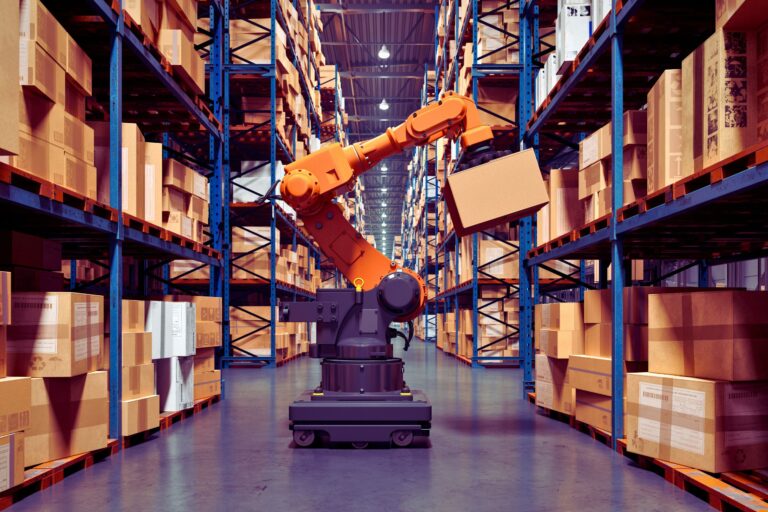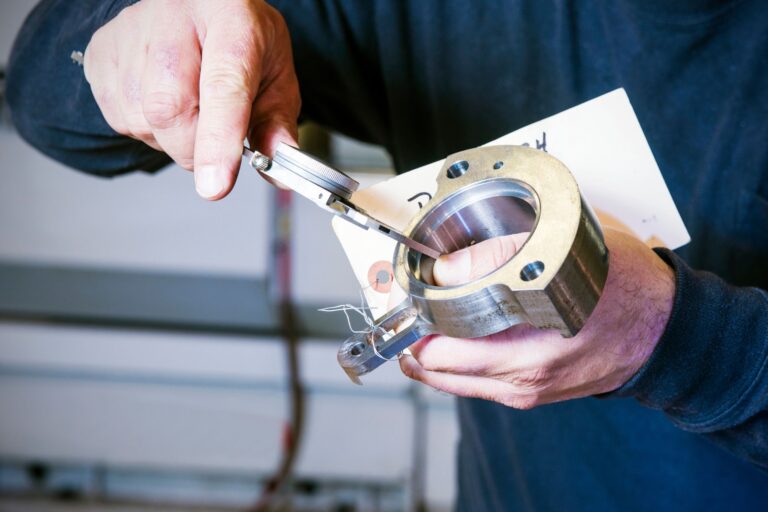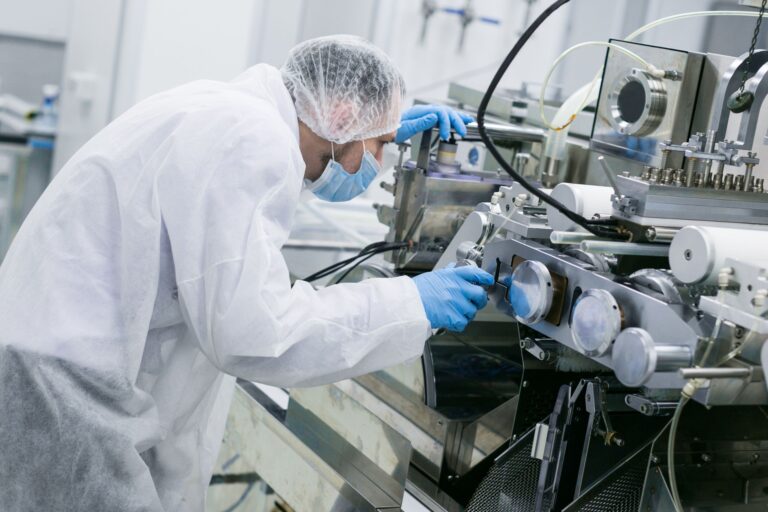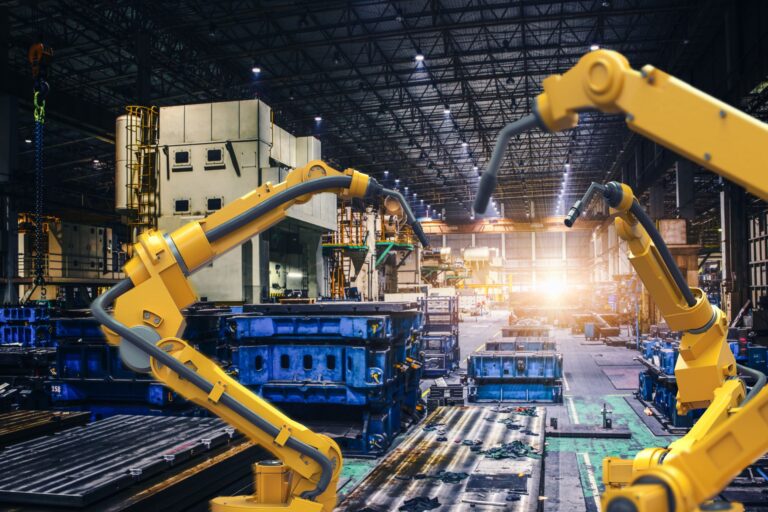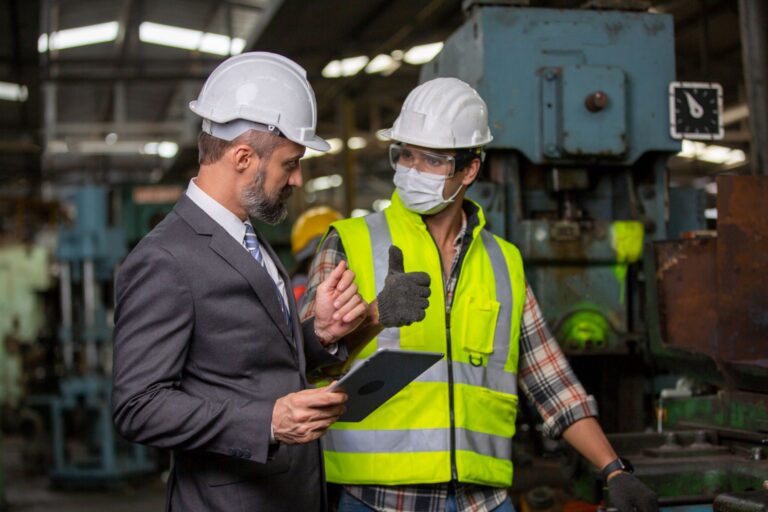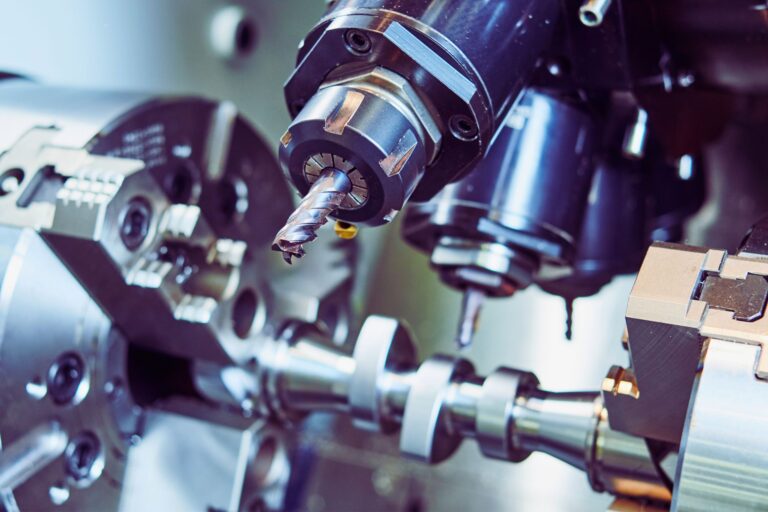Die Integration von Robotik in die Fertigung hat die industrielle Produktion revolutioniert und zu einem beispiellosen Maß an Effizienz, Präzision und Skalierbarkeit geführt. Mit der Weiterentwicklung der Automatisierungstechnologien nutzen Hersteller Robotik, um Prozesse zu optimieren, die Produktqualität zu verbessern und Betriebskosten zu senken. Von Fließbändern bis hin zur Metallverarbeitung spielt die Robotik eine entscheidende Rolle bei der Gestaltung der Zukunft der Fertigung.
Die Rolle der Robotik in der modernen Fertigung
Industrieroboter sind darauf ausgelegt, wiederkehrende, komplexe und gefährliche Aufgaben schnell und präzise auszuführen. Diese Maschinen sind mit fortschrittlichen Sensoren, künstlicher Intelligenz (KI) und Automatisierungsfunktionen ausgestattet, die es ihnen ermöglichen, neben menschlichen Arbeitern oder unabhängig in Produktionslinien zu arbeiten.
Hauptvorteile der Robotik in der Fertigung:
- Erhöhte Produktivität: Roboter arbeiten rund um die Uhr ohne Ermüdung und steigern so die Produktionsleistung erheblich.
- Verbesserte Präzision: Robotersysteme führen hochdetaillierte Aufgaben mit minimaler Fehlerquote aus und gewährleisten so eine gleichbleibende Produktqualität.
- Verbesserte Sicherheit am Arbeitsplatz: Roboter handhaben gefährliche Stoffe und führen gefährliche Aufgaben aus, wodurch die Risiken für menschliche Arbeiter verringert werden.
- Kosteneffizienz: Durch Automatisierung werden Arbeitskosten gesenkt, Abfall minimiert und die Ressourcennutzung optimiert.
- Skalierbarkeit: Roboterlösungen können an veränderte Produktionsanforderungen angepasst und für verschiedene Anwendungen individuell angepasst werden.
Arten von Robotern, die in der Fertigung verwendet werden
1. Gelenkroboter
Diese Roboterarme mit mehreren Gelenken bieten Bewegungsflexibilität und werden häufig für Schweiß-, Montage- und Materialhandhabungsaufgaben verwendet.
2. Kollaborative Roboter (Cobots)
Cobots wurden für die Zusammenarbeit mit menschlichen Bedienern entwickelt und unterstützen bei sich wiederholenden oder körperlich anstrengenden Aufgaben. So verbessern sie die Effizienz und Ergonomie am Arbeitsplatz.
3. Fahrerlose Transportfahrzeuge (AGVs) und autonome mobile Roboter (AMRs)
AGVs und AMRs werden für den Materialtransport, die Lagerlogistik und die Bestandsverwaltung eingesetzt und optimieren so die Abläufe in der Lieferkette.
4. Kartesische und SCARA-Roboter
Diese Hochgeschwindigkeitsroboter werden für präzise Pick-and-Place-Aufgaben, die Elektronikmontage und Qualitätsprüfungsprozesse eingesetzt.
5. Roboter-Schweiß- und Schneidsysteme
Mit Laser-, Plasma- oder Lichtbogenschweißwerkzeugen ausgestattete Roboter gewährleisten hohe Präzision und Konsistenz bei Metallverarbeitungsanwendungen.
Fortschritte in der Robotertechnologie
1. KI-gesteuerte Robotik
Algorithmen für maschinelles Lernen verbessern die Fähigkeiten von Robotern und ermöglichen Entscheidungen in Echtzeit, Fehlererkennung und adaptive Reaktionen auf Produktionsänderungen.
2. Integration des Internets der Dinge (IoT)
Vernetzte Robotersysteme nutzen IoT-Sensoren zum Erfassen und Analysieren von Produktionsdaten und optimieren so die Effizienz von Arbeitsabläufen und die vorausschauende Wartung.
3. 3D-Vision und Sensortechnologie
Mithilfe fortschrittlicher Bildverarbeitungssysteme können Roboter Objekte identifizieren, sich in Umgebungen zurechtfinden und mit hoher Genauigkeit Qualitätskontrollen durchführen.
4. Digitale Zwillinge und Simulation
Mithilfe der Digital-Twin-Technologie werden virtuelle Modelle von Robotersystemen erstellt, sodass Hersteller Automatisierungsprozesse vor der Bereitstellung testen und verfeinern können.
5. Mensch-Roboter-Zusammenarbeit
Innovative Sicherheitsfunktionen ermöglichen eine nahtlose Zusammenarbeit zwischen Mensch und Roboter und erweitern die Automatisierungsmöglichkeiten in den Bereichen Montage, Verpackung und Logistik.
Herausforderungen und Überlegungen
Obwohl die Robotik zahlreiche Vorteile bietet, müssen Hersteller die folgenden Herausforderungen berücksichtigen:
- Hohe Anfangsinvestition: Der Einsatz robotergestützter Automatisierung erfordert erhebliches Kapital für Hardware, Software und Integration.
- Schulung der Mitarbeiter: Mitarbeiter müssen darin geschult werden, Robotersysteme effektiv zu bedienen, zu programmieren und zu warten.
- Integration mit bestehenden Systemen: Um die Roboterautomatisierung zu ermöglichen, müssen möglicherweise ältere Fertigungsprozesse angepasst werden.
- Cybersicherheitsrisiken: Eine zunehmende Konnektivität bringt potenzielle Schwachstellen mit sich, die mit robusten Sicherheitsmaßnahmen bewältigt werden müssen.
Die Zukunft der Robotik in der Fertigung
Mit der Weiterentwicklung der Robotik werden Branchen einen höheren Grad an Automatisierung, Effizienz und Individualisierung erreichen. Zukünftige Trends sind:
- Selbstlernende Roboter: KI-gesteuerte Roboter, die sich im Laufe der Zeit ohne manuelle Programmierung anpassen und verbessern.
- Nanorobotik in der Fertigung: Mikroskopische Roboter, die in der Lage sind, komplizierte Komponenten auf molekularer Ebene zusammenzusetzen.
- Nachhaltige Robotik: Energieeffiziente Robotersysteme, die auf eine minimale Umweltbelastung ausgelegt sind.
Wir bei SL Industries erkennen das transformative Potenzial der Robotik in der Fertigung. Indem Unternehmen dem technologischen Fortschritt immer einen Schritt voraus sind, können sie Präzision, Effizienz und Wettbewerbsfähigkeit in einer zunehmend automatisierten Industrielandschaft steigern.

